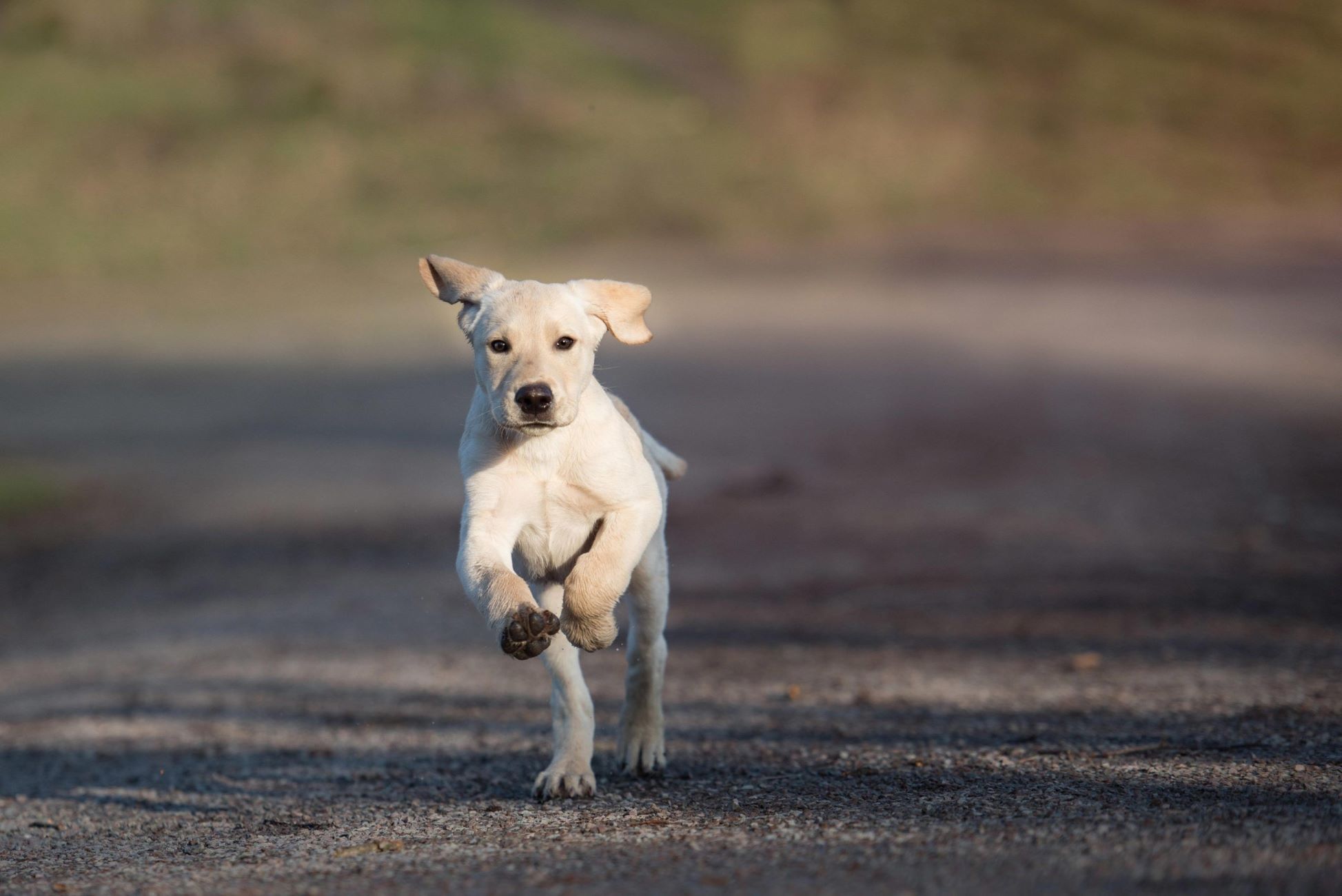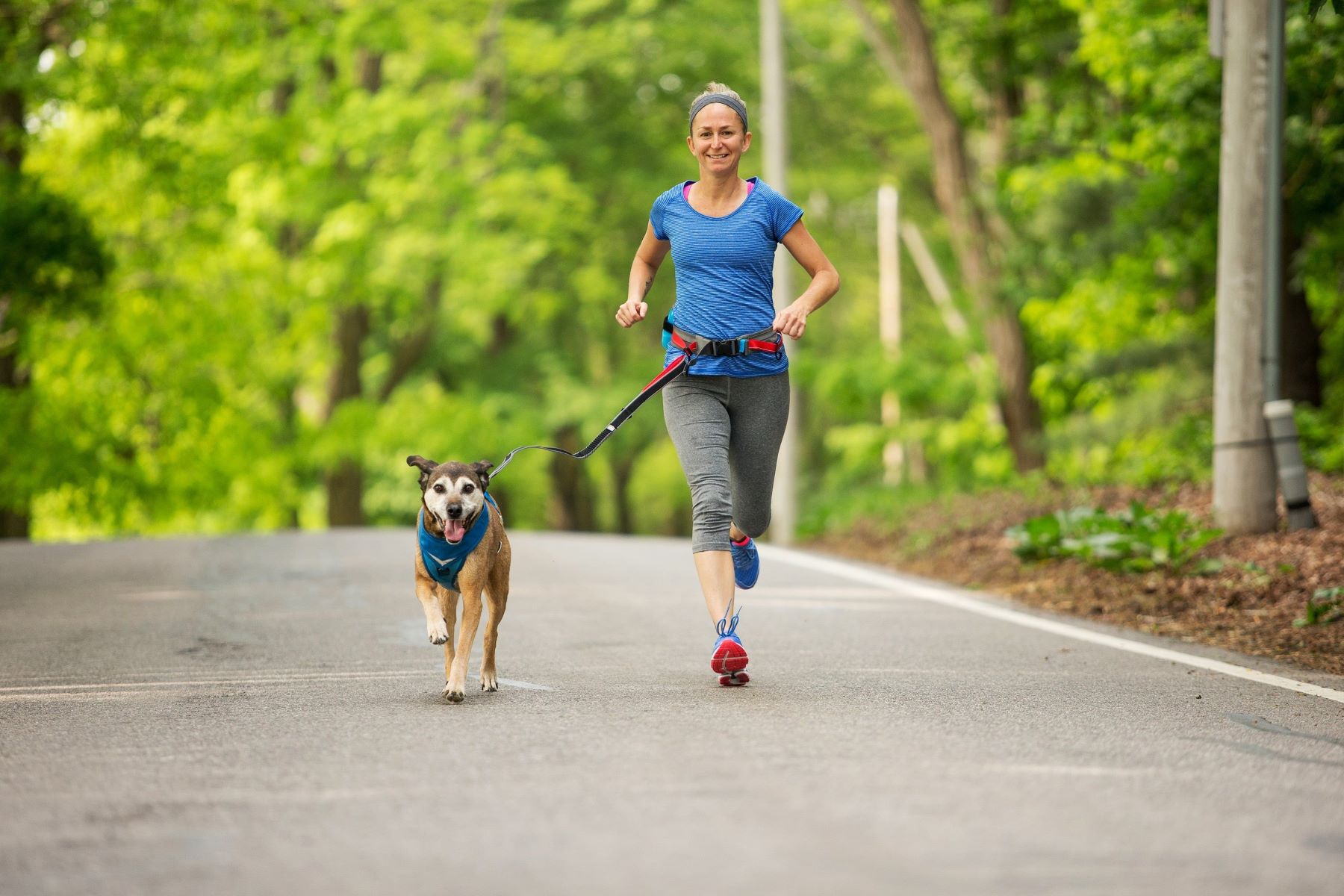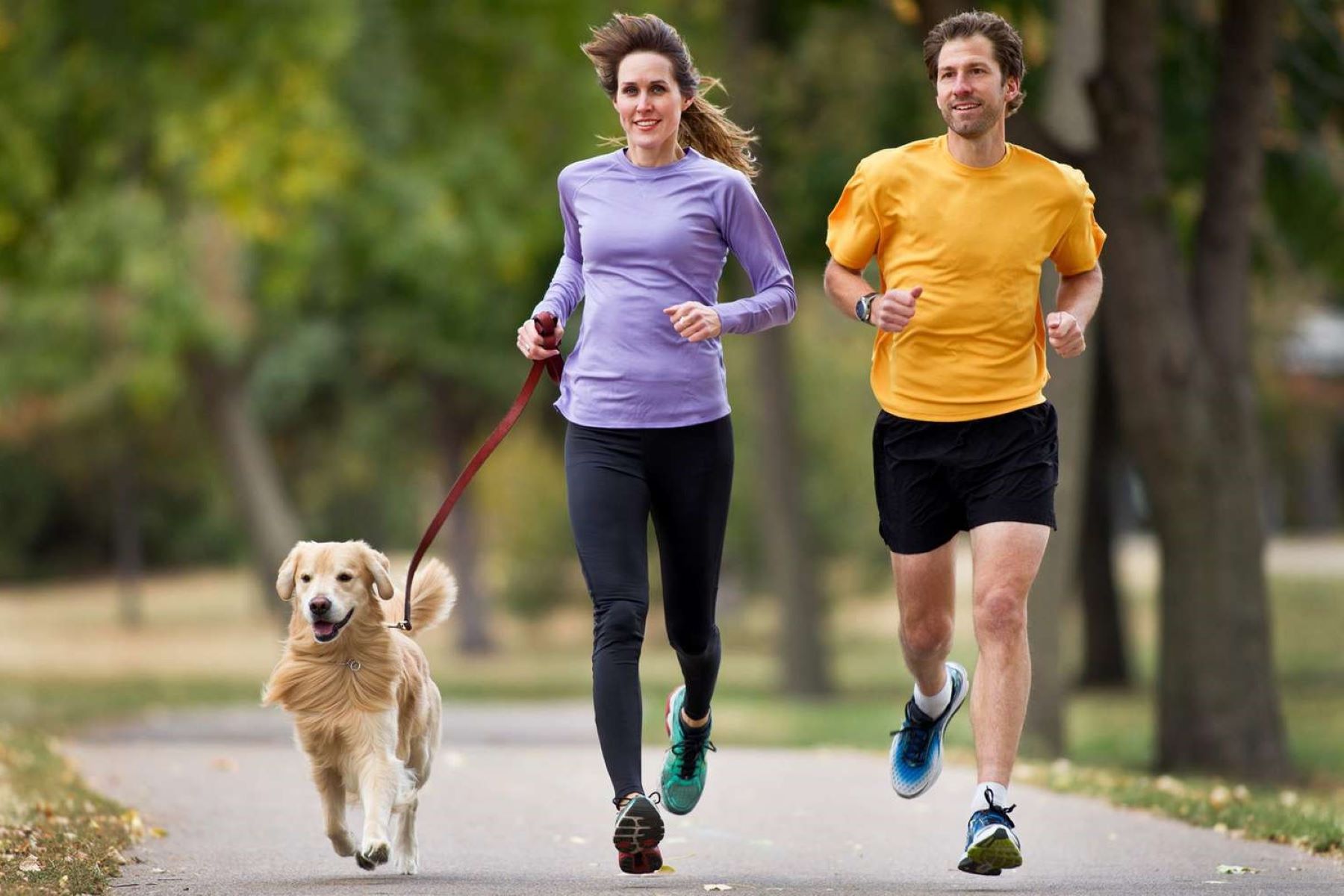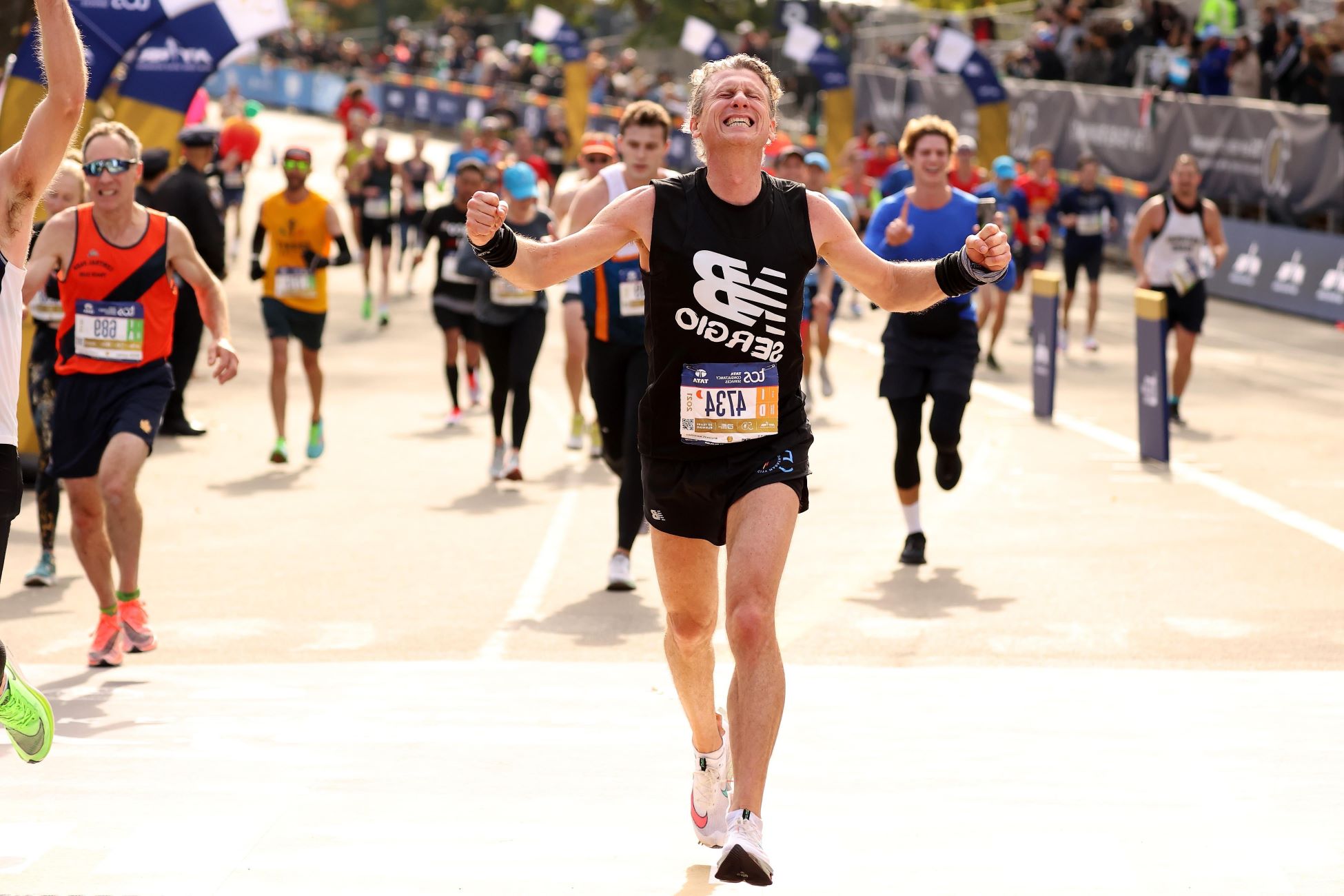Home>Training & Techniques>10 Strategies For Dealing With Unwanted Attention From Dogs While Running


Training & Techniques
10 Strategies For Dealing With Unwanted Attention From Dogs While Running
Published: February 28, 2024
Discover effective training and techniques to handle unwanted attention from dogs while running with these 10 strategies. Keep your runs safe and enjoyable.
(Many of the links in this article redirect to a specific reviewed product. Your purchase of these products through affiliate links helps to generate commission for Therunningadvisor.com, at no extra cost. Learn more)
Table of Contents
Understanding Canine Behavior
Understanding canine behavior is crucial for runners who encounter dogs during their workouts. Dogs are naturally curious and territorial animals, and their behavior can be influenced by various factors such as breed, training, and past experiences. By gaining insight into canine behavior, runners can better anticipate and respond to interactions with dogs while on the road.
-
Body Language: Dogs communicate through body language, and it's essential for runners to be able to interpret these signals. A dog's body posture, tail position, and facial expressions can provide valuable clues about its intentions. For example, a dog with a stiff body, raised hackles, and a fixed gaze may be displaying signs of aggression or discomfort.
-
Territorial Instincts: Dogs are naturally territorial animals and may perceive runners as intruders in their space. This territorial instinct can trigger protective or defensive behavior, especially in areas where dogs are accustomed to guarding their territory.
-
Pack Mentality: Dogs are pack animals, and their behavior is influenced by their social structure. When encountering a lone runner, some dogs may exhibit protective behavior, as they perceive the runner as a potential threat to their pack or territory.
-
Fear and Anxiety: Dogs may react aggressively when they feel threatened or anxious. Runners should be mindful of behaviors such as barking, growling, or lunging, which can indicate that a dog is feeling fearful or stressed.
-
Playfulness: In some cases, a dog's approach may be driven by a playful demeanor rather than aggression. Understanding the difference between playful behavior and genuine aggression can help runners respond appropriately to the situation.
By understanding these aspects of canine behavior, runners can better assess the intentions of approaching dogs and take proactive measures to ensure their safety and the well-being of the animals.
Establishing Boundaries with Dogs
Establishing boundaries with dogs is essential for runners who frequently encounter canines during their workouts. By setting clear boundaries, runners can effectively communicate with dogs and minimize the risk of unwanted interactions. Here are several strategies for establishing boundaries with dogs while running:
-
Maintain a Confident Posture: When approaching a dog, maintain a confident and assertive posture. Stand tall, avoid making sudden movements, and project a sense of calm authority. Dogs are perceptive animals and can pick up on human body language. By exuding confidence, runners can convey a message of assertiveness and control, which can deter dogs from approaching in an aggressive manner.
-
Use Verbal Commands: Employing firm and clear verbal commands can help establish boundaries with dogs. When encountering an approaching dog, use authoritative phrases such as "No" or "Go home" in a steady, assertive tone. These commands can signal to the dog that its approach is unwelcome and encourage it to maintain a safe distance.
-
Avoid Direct Eye Contact: Direct eye contact with a dog can be perceived as a challenge or threat in canine communication. To establish boundaries, avoid prolonged eye contact with approaching dogs. Instead, maintain a relaxed gaze and focus on the surrounding environment to convey a non-confrontational demeanor.
-
Set Physical Boundaries: If a dog continues to approach despite verbal commands, create a physical barrier by extending an object such as a water bottle or a piece of clothing toward the dog. This action can help maintain a safe distance and discourage the dog from getting too close.
-
Respect the Dog's Space: Recognize that dogs have their own personal space, and it's important to respect their boundaries. Avoid reaching out to pet or touch unfamiliar dogs, as this can be perceived as invasive behavior. By respecting the dog's space, runners can minimize the likelihood of provoking a defensive response.
-
Carry a Deterrent: In situations where verbal commands and body language are not effective, carrying a dog deterrent such as a citronella spray or an ultrasonic device can serve as a last line of defense. These deterrents can help create a safe buffer zone between the runner and the dog, providing an additional layer of protection.
By implementing these strategies, runners can establish clear boundaries with dogs and mitigate the risk of unwanted attention or confrontations while enjoying their outdoor workouts. Understanding how to effectively communicate and interact with dogs can contribute to a safer and more enjoyable running experience for both humans and animals alike.
Using Deterrents and Repellents
When encountering persistent or aggressive dogs during running sessions, having effective deterrents and repellents at hand can provide an added layer of protection and peace of mind for runners. These tools can serve as valuable safeguards, helping to deter unwanted canine attention and minimize the risk of confrontations. Here are several options for utilizing deterrents and repellents to enhance safety while running:
Citronella Spray
Citronella spray is a popular and humane deterrent that can be used to discourage approaching dogs. This natural substance, derived from citronella oil, emits a strong, citrus-like scent that is unpleasant to dogs without causing harm. When faced with an aggressive or overly curious dog, a quick spray of citronella in the direction of the animal can help create a deterrent effect, prompting the dog to retreat. Citronella spray is widely available in compact, easy-to-carry containers, making it a convenient option for runners seeking a non-invasive means of deterring dogs.
Ultrasonic Devices
Ultrasonic devices emit high-frequency sound waves that are inaudible to humans but can be highly disruptive and discomforting to dogs. These portable devices are designed to emit a piercing sound when activated, serving as an effective deterrent for approaching or aggressive dogs. By producing a startling and unpleasant auditory experience for the dog, ultrasonic devices can effectively discourage unwanted canine interactions. Runners can carry these compact devices for quick deployment when encountering dogs during their workouts.
Pepper Spray
Pepper spray, commonly used for personal defense against human attackers, can also be an effective deterrent for aggressive dogs. This potent spray contains capsaicin, a natural irritant derived from chili peppers, which causes temporary discomfort and irritation when sprayed in the direction of an approaching dog. Pepper spray can serve as a powerful deterrent, creating a safe buffer zone between the runner and the dog. It is important for runners to exercise caution and familiarize themselves with the proper use of pepper spray to ensure responsible and effective deployment when needed.
Electronic Dog Repellents
Electronic dog repellents are handheld devices that emit a combination of high-pitched sounds, flashing lights, or vibrations to deter approaching dogs. These devices are designed to startle and deter dogs without causing harm, offering a humane and non-invasive method of discouraging unwanted canine attention. Electronic dog repellents are lightweight and portable, making them convenient for runners to carry during their workouts. By emitting sensory stimuli that are aversive to dogs, these devices can help create a safe distance between runners and approaching canines.
By incorporating these deterrents and repellents into their running routines, individuals can enhance their preparedness and confidence when encountering dogs along their routes. It is important for runners to familiarize themselves with the proper usage and legal considerations related to these tools, ensuring responsible and effective deployment when faced with challenging canine encounters. Ultimately, having access to effective deterrents and repellents can contribute to a safer and more enjoyable running experience, allowing runners to navigate their outdoor workouts with greater peace of mind.
Changing Your Running Route
Changing your running route can be an effective strategy for minimizing encounters with unwanted attention from dogs while maintaining an enjoyable and varied workout experience. By strategically altering the paths and locations where you run, you can proactively reduce the likelihood of encountering aggressive or territorial dogs. Here are several considerations and approaches for implementing this strategy:
Explore Different Neighborhoods and Parks
Exploring different neighborhoods and parks can offer a diverse range of running routes, each with its own unique characteristics and potential for minimizing dog encounters. By venturing into new areas, you can discover routes that are less frequented by roaming or unleashed dogs, thereby reducing the risk of unwanted interactions. Parks with designated running trails or well-maintained pathways can provide safe and dog-friendly environments for your workouts, offering a refreshing change of scenery while minimizing potential canine disturbances.
Read more: Top 6 Dog Breeds For Running
Time Your Runs Strategically
Timing your runs strategically can play a significant role in avoiding encounters with dogs. Consider adjusting your running schedule to avoid peak times when dog owners are more likely to be walking their pets. Early morning or late evening runs may offer quieter and less populated routes, reducing the chances of encountering unleashed or unattended dogs. Additionally, planning your runs during weekdays when dog owners may be occupied with work or other commitments can contribute to a more peaceful and uninterrupted workout experience.
Utilize Urban and Well-Lit Routes
Opting for urban routes and well-lit pathways can provide a sense of security and minimize the potential for unexpected dog encounters. Urban environments often have higher foot traffic and visibility, which can deter dogs from freely roaming or exhibiting territorial behavior. Well-lit routes, particularly during evening runs, offer improved visibility and awareness, allowing you to spot and navigate around potential canine hazards more effectively.
Seek Recommendations from Local Running Communities
Engaging with local running communities and seeking recommendations from fellow runners can offer valuable insights into dog-friendly routes and areas to avoid. Online forums, social media groups, or running clubs may provide firsthand experiences and recommendations for routes that are known for minimal dog disturbances. By tapping into the collective knowledge of the running community, you can discover new routes that align with your preferences and safety considerations.
Embrace Flexibility and Adaptability
Maintaining a mindset of flexibility and adaptability when planning your running routes can empower you to make real-time adjustments based on observed dog activity or unexpected encounters. Being open to altering your course or taking detours in response to potential canine threats can contribute to a proactive and responsive approach to managing unwanted attention from dogs. Embracing flexibility allows you to prioritize safety and enjoyment during your runs, even in the face of unforeseen challenges.
By incorporating these strategies and approaches, you can effectively change your running route to minimize encounters with unwanted attention from dogs while enhancing the overall safety and enjoyment of your workouts. Embracing variety, strategic timing, and community insights can empower you to navigate your running routes with confidence and peace of mind, ensuring that your outdoor workouts remain a positive and fulfilling experience.
Carrying Dog Repellent Spray
Carrying dog repellent spray during running sessions can provide a sense of security and preparedness for dealing with potential canine encounters. This portable and easy-to-use deterrent serves as a proactive measure to deter aggressive or overly curious dogs, offering runners a valuable tool to maintain their safety and peace of mind during outdoor workouts.
Dog repellent spray, often formulated with natural ingredients such as citronella, offers a humane and non-invasive method of discouraging unwanted canine attention. Its compact and lightweight design makes it convenient for runners to carry, ensuring quick accessibility in the event of a dog-related incident. The spray can be easily stowed in a pocket, waistband, or armband, allowing for seamless integration into the runner's gear without causing disruption or discomfort.
When faced with an approaching or aggressive dog, the swift deployment of dog repellent spray can create a safe buffer zone between the runner and the animal. The emitted spray, typically in the form of a directed stream or mist, serves as a deterrent by releasing an unpleasant scent that dogs find aversive. This prompts the dog to retreat or cease its approach, providing the runner with a means of effectively managing the situation without resorting to physical confrontation.
Furthermore, the use of dog repellent spray aligns with principles of responsible and compassionate animal interaction. By employing a non-harmful deterrent, runners can prioritize their safety while minimizing harm to the dogs themselves. This approach reflects a balanced and considerate response to potential conflicts, emphasizing the importance of proactive prevention and de-escalation in managing interactions with animals.
In addition to its practical utility, carrying dog repellent spray can instill a sense of confidence and empowerment in runners, allowing them to navigate their running routes with greater assurance. The knowledge that a reliable deterrent is readily available can alleviate concerns about encountering aggressive or unrestrained dogs, enabling runners to focus on their workouts and enjoy the outdoor environment without undue apprehension.
Ultimately, the inclusion of dog repellent spray as part of a runner's essential gear underscores a proactive and safety-conscious approach to managing potential canine encounters. By equipping themselves with this effective deterrent, runners can enhance their preparedness and resilience, fostering a more secure and enjoyable running experience while promoting responsible coexistence with the canine community.
Using Positive Reinforcement Techniques
Employing positive reinforcement techniques can be a constructive and compassionate approach to fostering harmonious interactions between runners and dogs encountered during outdoor workouts. By leveraging positive reinforcement methods, runners can not only mitigate potential conflicts with dogs but also contribute to the promotion of desirable behaviors in these animals. This proactive and empathetic approach aligns with principles of responsible pet ownership and community coexistence, emphasizing the cultivation of mutual respect and understanding between humans and dogs.
Positive reinforcement involves the use of rewards and encouragement to reinforce desired behaviors in dogs. When applied thoughtfully and consistently, this approach can help shape positive associations and responses, ultimately influencing the behavior of dogs encountered during running sessions. One of the fundamental principles of positive reinforcement is the utilization of rewards, such as treats, verbal praise, or affectionate gestures, to reinforce behaviors that are conducive to peaceful and respectful interactions.
For runners seeking to implement positive reinforcement techniques when encountering dogs, carrying dog treats or small, easily portable rewards can serve as valuable tools for encouraging positive behavior. When approached by a friendly or well-behaved dog, offering a small treat or providing verbal praise can convey a message of appreciation and encouragement, reinforcing the dog's favorable conduct. This approach not only fosters a positive experience for the dog but also contributes to the establishment of a mutually beneficial and respectful dynamic between the runner and the animal.
Furthermore, positive reinforcement techniques can be instrumental in shaping the behavior of dogs exhibiting signs of anxiety or distress during interactions with runners. By employing calming verbal cues, gentle gestures, and the consistent provision of reassurance, runners can help alleviate the apprehension and unease experienced by dogs, thereby promoting a sense of trust and security. This empathetic and supportive approach can contribute to de-escalating potential conflicts and fostering a more harmonious coexistence between runners and dogs in outdoor settings.
In addition to immediate interactions, the application of positive reinforcement techniques can have broader implications for the long-term behavior and socialization of dogs within their communities. By consistently rewarding and acknowledging desirable behaviors in dogs encountered during running sessions, runners can contribute to the reinforcement of positive conduct and the cultivation of a respectful and cooperative relationship between humans and dogs. This proactive engagement with positive reinforcement aligns with the ethos of responsible pet stewardship and community engagement, emphasizing the role of individuals in promoting a safe and inclusive environment for all.
In essence, the utilization of positive reinforcement techniques represents a proactive and compassionate approach to managing interactions with dogs during running activities. By leveraging rewards, encouragement, and empathetic communication, runners can contribute to the cultivation of positive behaviors and mutual understanding, fostering a harmonious coexistence between humans and dogs in outdoor settings. This approach reflects a commitment to responsible and considerate engagement with the canine community, promoting a culture of respect, empathy, and cooperation within shared public spaces.
Seeking Professional Help
Seeking professional help can be a crucial step for runners who encounter persistent or concerning issues related to unwanted attention from dogs during their workouts. Professional assistance can provide valuable guidance, expertise, and resources to address and mitigate challenges associated with canine interactions, ultimately contributing to a safer and more confident running experience.
One avenue for seeking professional help is consulting with certified dog behaviorists or trainers who specialize in addressing canine behavioral issues. These professionals possess in-depth knowledge of dog behavior, psychology, and training methodologies, enabling them to assess and address the underlying factors contributing to dogs' reactions towards runners. By engaging with a qualified behaviorist or trainer, runners can gain insights into the specific triggers and dynamics influencing dogs' behavior, as well as receive tailored strategies and training recommendations to promote more positive and predictable interactions.
Additionally, seeking guidance from veterinarians or animal welfare organizations can offer valuable perspectives on understanding and managing dog behavior. Veterinarians can provide insights into potential health-related factors that may influence dogs' responses to runners, while also offering recommendations for behavior modification or management. Animal welfare organizations may offer educational resources, community outreach programs, and support networks aimed at promoting responsible pet ownership and fostering positive human-dog interactions within shared public spaces.
In cases where runners encounter aggressive or unrestrained dogs that pose immediate safety concerns, seeking assistance from local animal control agencies or law enforcement authorities is paramount. Reporting incidents of aggressive dog behavior to the appropriate authorities can prompt swift intervention and enforcement of relevant regulations, thereby contributing to the protection of both runners and the broader community. By engaging with law enforcement or animal control professionals, runners can play an active role in advocating for public safety and responsible pet ownership, while also contributing to the documentation and resolution of concerning dog-related incidents.
Furthermore, participation in community workshops, seminars, or educational programs focused on dog behavior and responsible pet ownership can provide runners with valuable insights and practical strategies for navigating interactions with dogs. These initiatives, often facilitated by animal behavior experts, trainers, or community organizations, offer opportunities for learning, skill-building, and networking with like-minded individuals who share an interest in promoting positive human-dog relationships. By engaging with these educational resources, runners can expand their knowledge base, enhance their confidence in managing dog encounters, and contribute to the cultivation of a more informed and empathetic community approach to canine interactions.
In essence, seeking professional help encompasses a proactive and collaborative approach to addressing challenges related to unwanted attention from dogs while running. By leveraging the expertise and support of qualified professionals, runners can gain valuable insights, resources, and strategies to navigate and mitigate dog-related concerns, ultimately fostering a safer, more informed, and inclusive outdoor running environment for all.
Wearing Protective Gear
Wearing protective gear while engaging in outdoor running activities can significantly enhance safety and confidence when encountering dogs along running routes. This proactive approach involves incorporating specialized equipment and attire designed to mitigate the potential risks associated with dog encounters, thereby promoting a more secure and enjoyable running experience.
One essential component of protective gear for managing dog interactions is the utilization of reflective and high-visibility apparel. Incorporating reflective elements into running attire, such as vests, armbands, or footwear, enhances visibility during low-light conditions, increasing the likelihood of early detection and avoidance of approaching dogs. High-visibility gear not only benefits the runner by improving their own visibility to dogs and other pedestrians but also serves as a visual cue to alert dog owners and passersby to the runner's presence, potentially deterring unrestrained or unattended dogs from approaching.
In addition to reflective apparel, the inclusion of protective accessories such as lightweight arm sleeves or leg sleeves can offer an extra layer of defense against potential dog-related incidents. These sleeves provide coverage and protection against minor scratches, abrasions, or incidental contact that may occur during encounters with dogs. Furthermore, incorporating protective arm and leg sleeves can serve as a physical barrier, offering a sense of reassurance and readiness when navigating areas where dogs are known to frequent.
Another integral aspect of protective gear for managing dog encounters is the use of durable and comfortable running shoes with enhanced traction. Running shoes designed for outdoor terrain should feature reliable grip and stability, enabling runners to navigate various surfaces with confidence and agility, especially when encountering dogs in unpredictable or challenging environments. The traction and stability provided by quality running shoes can contribute to the runner's ability to maneuver safely and responsively in the presence of dogs, reducing the likelihood of slips or falls during unexpected interactions.
Furthermore, the inclusion of protective eyewear, such as sports sunglasses with impact-resistant lenses, can offer added safeguarding against potential hazards associated with dog encounters. These specialized sunglasses provide protection against airborne debris, dust, or incidental contact, enhancing the runner's visual comfort and safety during outdoor runs. In the event of encounters with dogs exhibiting agitated behavior, protective eyewear can serve as a preventive measure against eye irritation or injury, contributing to the overall preparedness and well-being of the runner.
By integrating these protective gear elements into their running routines, individuals can proactively enhance their readiness and resilience when navigating outdoor environments where dog encounters may occur. The thoughtful selection and utilization of protective apparel and accessories underscore a proactive and safety-conscious approach to managing potential canine interactions, ultimately contributing to a more secure and confident running experience.
Joining a Running Group
Joining a running group can offer numerous benefits for individuals seeking to enhance their running experience while effectively managing encounters with dogs. The collective dynamics and shared camaraderie within a running group create a supportive and empowering environment, fostering a sense of community, safety, and mutual encouragement among members.
By becoming part of a running group, individuals gain access to a network of like-minded peers who share a passion for running and outdoor fitness activities. This sense of community can serve as a valuable source of support and solidarity, particularly when navigating running routes that may pose potential challenges related to dog encounters. The collective presence of a running group can contribute to a heightened sense of security and confidence, providing reassurance to individual members as they engage in outdoor workouts.
Furthermore, running groups often organize structured group runs, which can offer a more structured and coordinated approach to managing potential dog-related incidents. During group runs, members can benefit from the added safety of numbers, with the collective presence of the group serving as a deterrent to unrestrained or aggressive dogs. Additionally, the shared vigilance and awareness among group members can contribute to early detection and proactive management of potential canine hazards, fostering a collaborative and protective ethos within the running community.
Participating in a running group also provides opportunities for knowledge sharing and collective insights into effective strategies for managing dog encounters. Members can exchange experiences, tips, and best practices for navigating routes known for dog activity, thereby enhancing the collective preparedness and resilience of the group. This collaborative knowledge-sharing fosters a culture of mutual support and empowerment, enabling individuals to navigate potential challenges with greater confidence and informed decision-making.
Moreover, the social dynamics within a running group can offer a sense of inclusivity and belonging, creating a supportive environment where individuals can share concerns, seek advice, and collectively address challenges related to dog encounters. The collective solidarity and mutual encouragement within the group can contribute to a more positive and enriching running experience, fostering a sense of empowerment and camaraderie among members.
In essence, joining a running group can provide individuals with a supportive and empowering framework for managing encounters with dogs while enhancing the overall safety, confidence, and enjoyment of their outdoor running activities. The collective strength, shared knowledge, and supportive dynamics within a running group can contribute to a more resilient and inclusive approach to navigating potential challenges, ultimately fostering a more positive and enriching running experience for all members.
Reporting Aggressive Dogs to Authorities
Reporting aggressive dogs to authorities is a critical step in promoting public safety and responsible pet ownership within communities. When individuals encounter aggressive or threatening behavior from dogs during their outdoor activities, prompt reporting to the appropriate authorities can facilitate timely intervention and mitigation of potential risks. By initiating the reporting process, individuals contribute to the documentation and resolution of concerning incidents, ultimately fostering a safer and more secure environment for all community members.
Upon encountering aggressive behavior from dogs, individuals should prioritize their safety and well-being while seeking to gather pertinent details about the incident. This may include noting the location, time, and specific circumstances of the encounter, as well as any identifying information about the dog and its owner, if applicable. Documenting these details can provide valuable information for authorities tasked with addressing the situation and implementing appropriate measures to prevent future incidents.
Once the relevant information has been gathered, individuals should promptly report the aggressive dog behavior to local animal control agencies, law enforcement authorities, or municipal authorities responsible for animal welfare and public safety. Reporting channels may include dedicated hotlines, online reporting platforms, or direct communication with animal control officers or law enforcement personnel. Providing a clear and detailed account of the incident, along with any supporting evidence or documentation, can facilitate a swift and effective response from the authorities.
When reporting aggressive dogs to authorities, individuals should emphasize the potential risks posed by the behavior and the impact on public safety. Communicating the specific actions and behaviors exhibited by the aggressive dog, as well as any resulting threats or injuries, can help authorities assess the severity of the situation and prioritize appropriate interventions. Additionally, individuals should convey any relevant concerns about recurring incidents or patterns of aggressive behavior in specific areas, contributing to a comprehensive understanding of the broader context.
Following the reporting of aggressive dog behavior, individuals should remain engaged with the authorities to provide any additional information or assistance as needed. Collaborating with animal control agencies or law enforcement personnel can support ongoing efforts to address the concerns raised, potentially leading to targeted interventions such as increased patrols, public awareness campaigns, or enforcement of leash and restraint regulations in affected areas.
By actively reporting aggressive dogs to authorities, individuals play a proactive role in promoting community safety and responsible pet ownership. Their contributions support the enforcement of relevant regulations, the documentation of concerning incidents, and the implementation of targeted measures to address aggressive behavior. Through this collaborative engagement with authorities, individuals contribute to the creation of a safer and more inclusive environment for outdoor activities, fostering a culture of responsible coexistence and mutual respect within the community.












